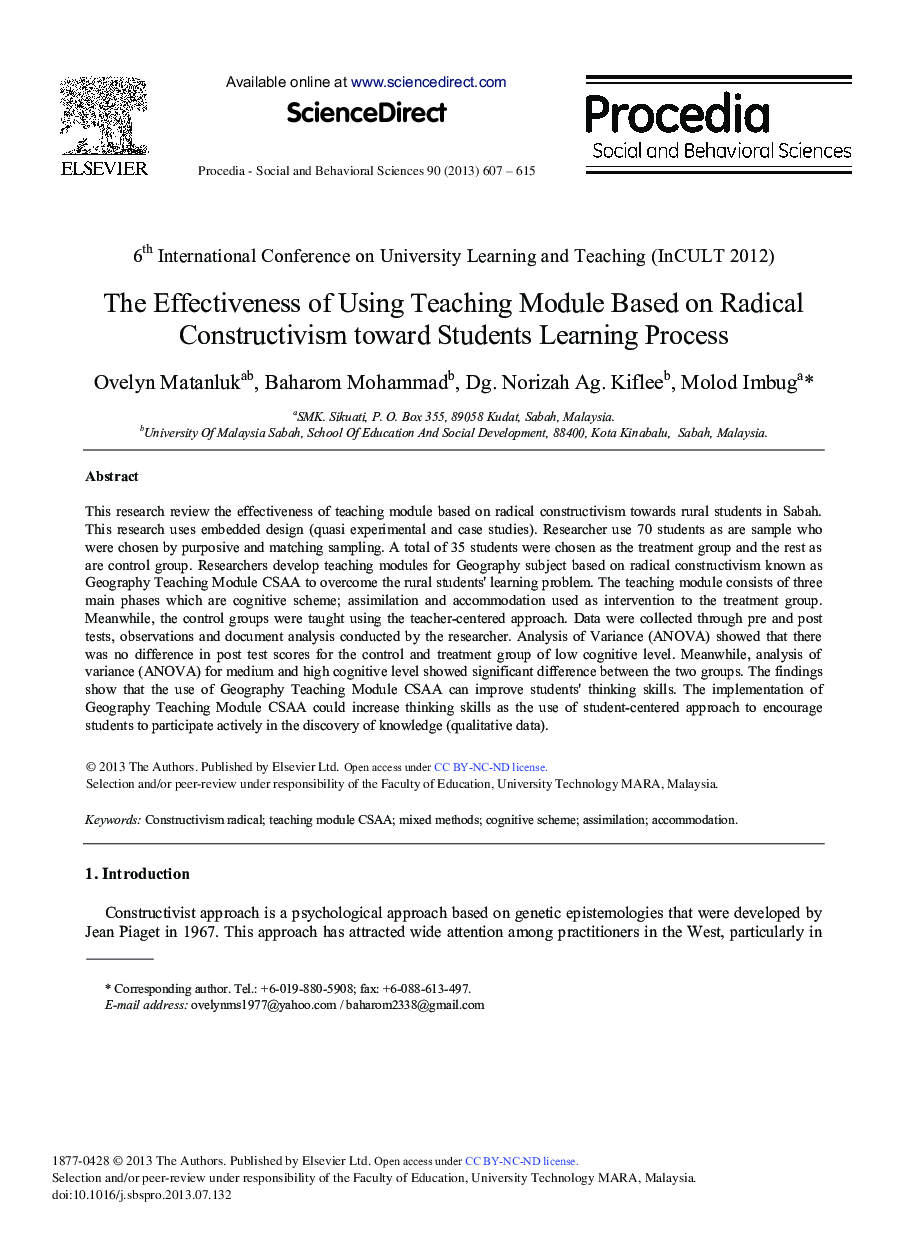| کد مقاله | کد نشریه | سال انتشار | مقاله انگلیسی | نسخه تمام متن |
|---|---|---|---|---|
| 1116431 | 1488469 | 2013 | 9 صفحه PDF | دانلود رایگان |

This research review the effectiveness of teaching module based on radical constructivism towards rural students in Sabah. This research uses embedded design (quasi experimental and case studies). Researcher use 70 students as are sample who were chosen by purposive and matching sampling. A total of 35 students were chosen as the treatment group and the rest as are control group. Researchers develop teaching modules for Geography subject based on radical constructivism known as Geography Teaching Module CSAA to overcome the rural students’ learning problem. The teaching module consists of three main phases which are cognitive scheme; assimilation and accommodation used as intervention to the treatment group. Meanwhile, the control groups were taught using the teacher-centered approach. Data were collected through pre and post tests, observations and document analysis conducted by the researcher. Analysis of Variance (ANOVA) showed that there was no difference in post test scores for the control and treatment group of low cognitive level. Meanwhile, analysis of variance (ANOVA) for medium and high cognitive level showed significant difference between the two groups. The findings show that the use of Geography Teaching Module CSAA can improve students’ thinking skills. The implementation of Geography Teaching Module CSAA could increase thinking skills as the use of student-centered approach to encourage students to participate actively in the discovery of knowledge (qualitative data).
Journal: Procedia - Social and Behavioral Sciences - Volume 90, 10 October 2013, Pages 607-615